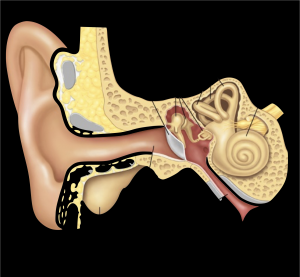Flaws in audio at listening position – frequency group time coherence
Flaws in audio at listening position – frequency group time coherence
Theory explanation 
Impact on listening 
What can I do? When … an audio system 
Theory explanation 
Explanation of TestHiFi’s measurement output data and the theory about the TestHiFi criteria.
Measurement data explanation:
TestHiFi measures in three positions average, to increase listening subjective, psychoacoustic relevance. It measures standard industry criteria. The measurement data shows you detailed identified weaknesses of the received sound at listening position.
The frequency group time coherence related criteria results indicate identified difference in sound onset time between mid and lower frequencies.
Critical setups with too much difference in onset time between mid and lower frequencies, are incapable of providing correct sound stage experience.
The differences in time between mid and lower frequencies rather indicate system incapabilities than room acoustic effects. However room acoustic effects like reflections early to the onset of sound might also be causation to indicated effects.
The indicated result shows the time difference between mid and lower frequencies in milli seconds. Negative values indicate lower frequencies being earlier than higher ones.
Theory:
Time and phase coherence is a very complex topic, probably not yet fully researched which and how those issues directly influence or correlate to the subjective perceived sound quality. However, it is commonly agreed in the industry, that the overall time and phase coherence influences the final output of an audio system and has a significant influence on the sound quality.
Music makes you sleepy on some seats in a concert hall. The same music on other seats in the same concert hall totally engages you. On the latter seat it makes you totally feel the drama intended by the artist. Distance to stage is not what drives this effect predominantly. Also see the blog: ghost-fundamental-and-engaging-sound Why is that and what does it come from?
How we perceive engaging sound
“Sounds perceived as close demand attention and convey drama. Sounds perceived as further away can be perfectly intelligible, but can be easily ignored. The properties of sound, that lead to engagement, also covey musical clarity. One is able, albeit with some practice, to hear all the notes in a piece, and not just the harmonies.”
What makes sound engaging
Engagement associates with sonic clarity. It is more than intelligibility, it is concerned with the physics of detecting and decoding information contained in sound waves. Specifically, how our ears and brain can extract such precise information on pitch, timbre, horizontal localization (azimuth), and distance of multiple sound sources at the same time.
Our ear identifies tones using its harmonics
Harmonic sounds come as a set of regularly spaced pure tones: if the fundamental frequency is 100Hz, the harmonic frequencies will be 200Hz, 300Hz, 400Hz and so on. Each one of those frequencies will correspond to a particular area of the tectorial membrane in our ear. Suppose a given harmonic sound comes with its fundamental frequency plus nine harmonics. This sets, no fewer than 10 distinct areas of the tectorial membrane in vibration. This provides an abundance of coherent information to the brain, which will have no difficulty in quickly and easily finding the right pitch. This is what makes the human ear so powerful for pitch identification.
Together, the harmonics include more information about the pitch of a sound than does the fundamental frequency. There can be as many as 16 audible harmonics, setting 16 zones of the tectorial membrane in motion, whereas the fundamental tone only puts one zone in motion. Not only are the harmonics important, so is the spacing between the harmonics, which is constant, and repeated up to 15 times. In fact, we can simply remove the fundamental frequency, as it is so unimportant as far as pitch is concerned.
Human neurology is acutely tuned to novelty
How we precisely identify pitch, timber and azimuth is encoded in the phases of upper harmonics of sounds with distinct pitches. Early reflections or time in-coherence can scrambled this upper harmonic information. The time coherence of harmonics and their fundamental sounds are critically important. Human neurology is acutely tuned to novelty. The onset of any perceptual event engages the mind. If the brain can detect and decode the phase information of fundamental and harmonics in the onset of a sound, we can determine pitch, azimuth and timbre with high clarity. We perceive the sound, although physically distant, as psychologically close – engaging.
A reproduced sound with non coherent time and phase aligned harmonics to their fundamental will cause similar effects for our ears. Thus the listening experience is more muddy and less engaging.
Impact on listening 
Perception of engaging versus sleepy music
The perception of engagement and its opposite, muddiness, are related to the perception of “near” and “far”. For obvious reasons sounds perceived as close to us demand our attention. We rather ignore sounds perceived as far. Humans perceive near and far almost instantly on hearing a sound of any loudness, even if they hear it with only one ear – or in a single microphone channel.
For example, if we localize reliably the inner instruments in a string quartet, we perceive the sound as engaging. When we do not localize, for example the viola and second violin, we perceive the sound as muddy and not engaging.
Time and phase coherence
In a live performance, very early reverberations influence the harmonics phase coherence of the fundamental tone. This leads to the muddy and not engaging sound in an imperfectly designed concert hall.

Frequency groups with incorrect time coherence across their crossovers influence the spacing and phasing of harmonics negatively. This leads to more muddiness, rather less engaging sound.
What can I do? When … an audio system 
What can I do when either buying, setting up or listening to an audio system?
… buying …
Systems which can not deliver HiFi quality in frequency range, distortion and stereo related criteria might not be relevant for a time coherence criteria. Such systems might be of advantage for other reasons, like size, weight, mobility or alike. Time coherence is rather a differentiating criteria for those systems which provide HiFi quality on the basic criteria like frequency range, stereo and distortion. It is rather the additional quality criteria for engaging sound and superior sound stage perception.
Positioning of speakers relative to each others, either physically or with a digital delay, is an option provided by some systems, to influence time coherence to some degree. Systems where speakers for high, mid and lower frequencies are in individual cases, can be positioned with more or less distance to each other. Speakers positioned closer to the listing position will onset tones perceived earlier by the listener. Digital sound processors can delay onset time for specific channels and frequency groups as well.
A sound system might be time coherent, might contain some options to influence time coherence or and which is true for most systems on the market, is neither time coherent nor adjustable with regard to time coherence.
… setting up …
Some speakers allow to adjust distance between higher and lower frequencies such as subwoofer systems, or systems with several speakers for different frequency ranges within individual cases. Such systems provide options in their setup to optimize time coherence for at least a specific listening position. As mentioned before, systems with digital sound processors provide functionality for digitally delaying of some frequency groups that allows for adjusting time coherence. This can help to optimize a specific listening position.
… listening to …
Time coherence or non-coherence is very system embedded. Most systems do not provide an option to adjust time coherence. Some systems offer DSP functionality to remotely adjust time coherence from listening position. Such systems offer the possibility to optimize various criteria while listening – online.

